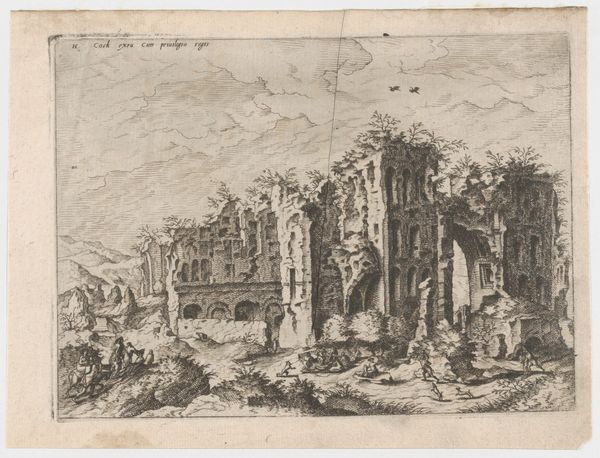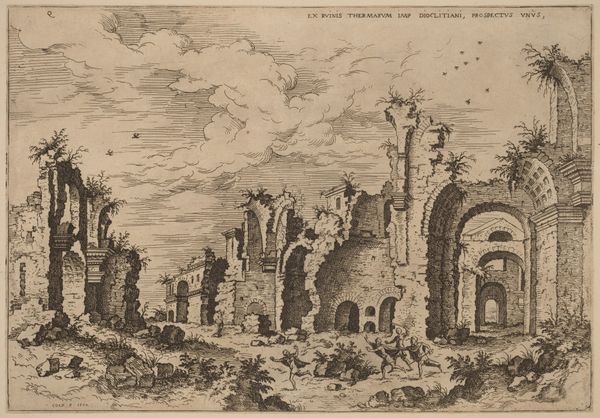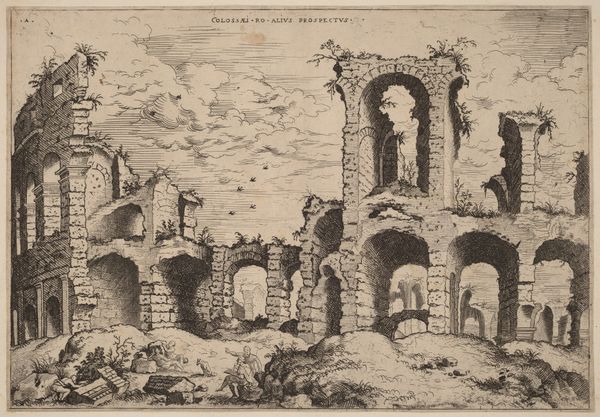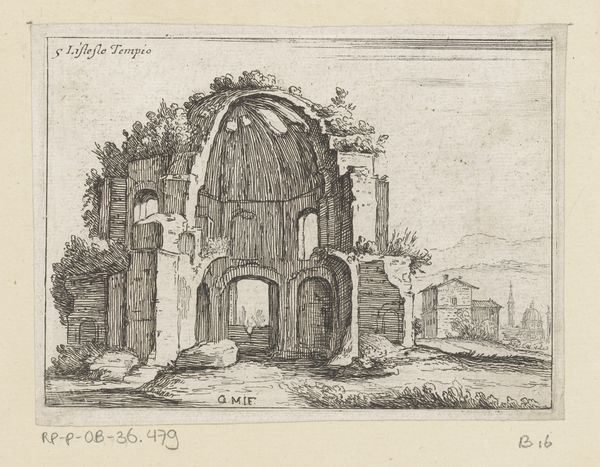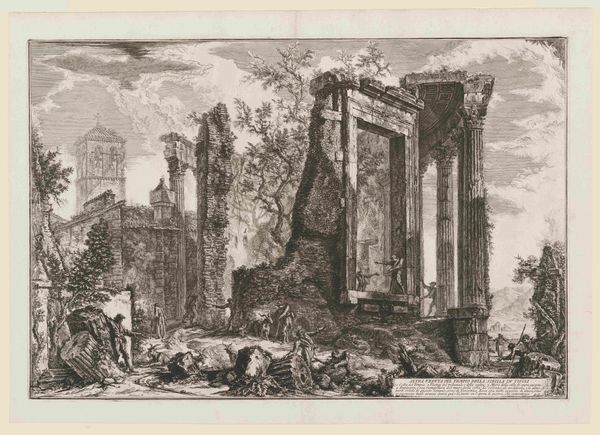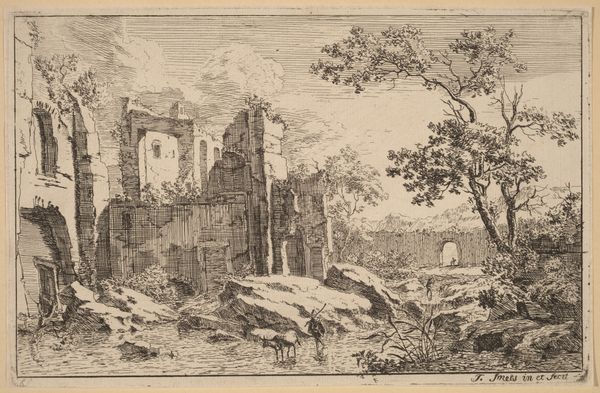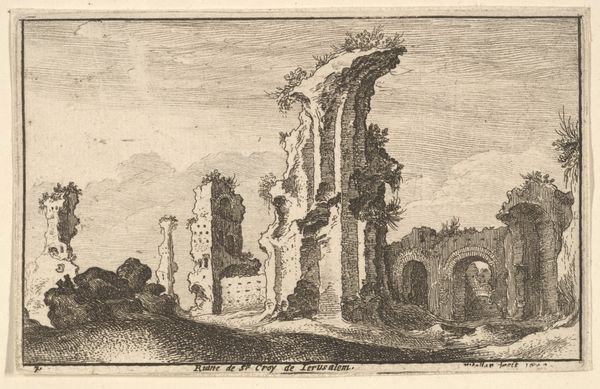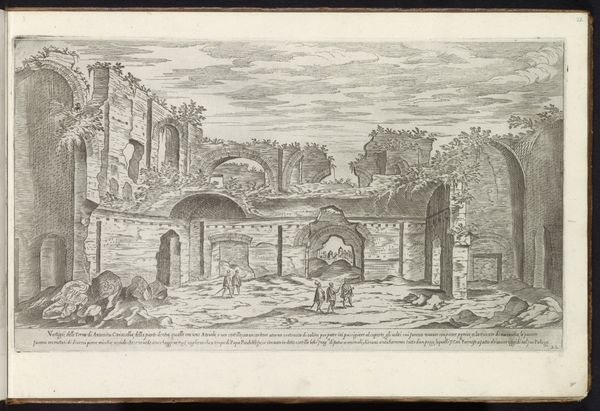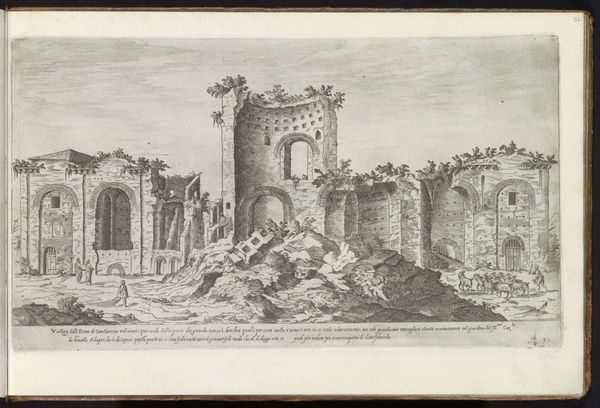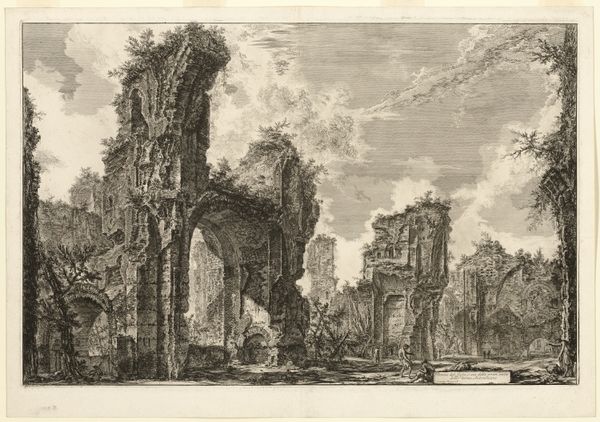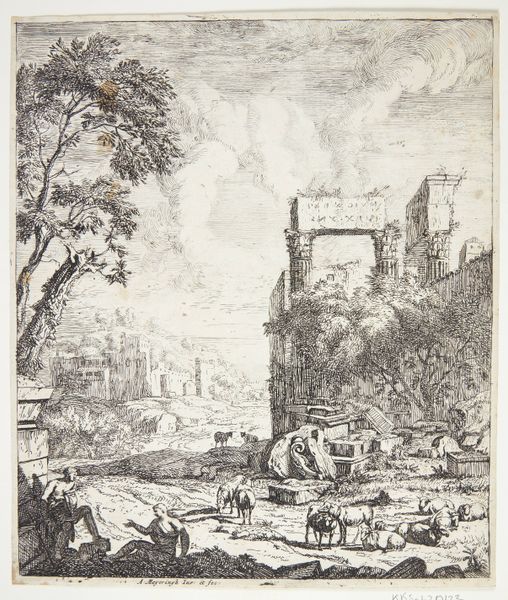
The Temple of Venus and Roma (erroneously called Temple of Sol and Luna) (Veduta degli avanzi di due triclini che appartenevano alla Casa aurea di Nerone) 1754 - 1764
0:00
0:00
drawing, print, etching
#
drawing
#
baroque
# print
#
etching
#
landscape
#
cityscape
#
history-painting
Copyright: Public Domain
Curator: Welcome. Here we have Giovanni Battista Piranesi’s “The Temple of Venus and Roma,” made sometime between 1754 and 1764. It’s an etching, demonstrating the grandeur of ancient Roman architecture, specifically ruins mistakenly identified at the time. Editor: What strikes me immediately is the almost theatrical use of light and shadow, drawing the eye to the imposing skeletal remains of what was once a magnificent structure. It's both awe-inspiring and melancholic. Curator: Exactly! Piranesi masterfully used etching to explore themes of decay and the passage of time. Observe the details, those tiny figures working amidst the ruins; they highlight the scale and the immensity of the project that went into the original Temple of Venus and Roma. This print provides more of an impression on what this space represents, how culture once thrived here, than being necessarily accurate to the exact structures. Editor: Yes, and notice the plants and weeds reclaiming the stones. Piranesi uses a visual language of decay as rebirth, a visual metaphor for the cyclical nature of civilization itself. Also, the very misnaming of the Temple. Did Piranesi not realize his mistake? Is the inaccurate title indicative of other issues within the image itself? What does the artist think about our culture of knowledge? Curator: Fascinating! The misidentification itself speaks to a broader interest in reconstructing and reimagining history. Consider the commercial element, though! Piranesi sought to profit off his Roman heritage by romanticizing these historical errors through a baroque style. These images circulated among Grand Tourists, furthering and, at the same time, challenging common ideas of European identity during a colonial era. Editor: Absolutely. The Temple of Venus represents ideas of love, beauty and even discord, depending on interpretations. But the name, no matter what it should be, also connects to Venus and other significant Roman gods— all visualized through crumbling stonework. Curator: What do you think then? This work becomes more than an architectural document. It becomes a mirror reflecting European values of this era: interest in history and the business surrounding it. Editor: Definitely, Piranesi gives us potent reminders of how deeply we humans connect with both what has survived, and what remains elusive about cultures of the past. Curator: Precisely. It provokes us to consider our own legacies.
Comments
No comments
Be the first to comment and join the conversation on the ultimate creative platform.
